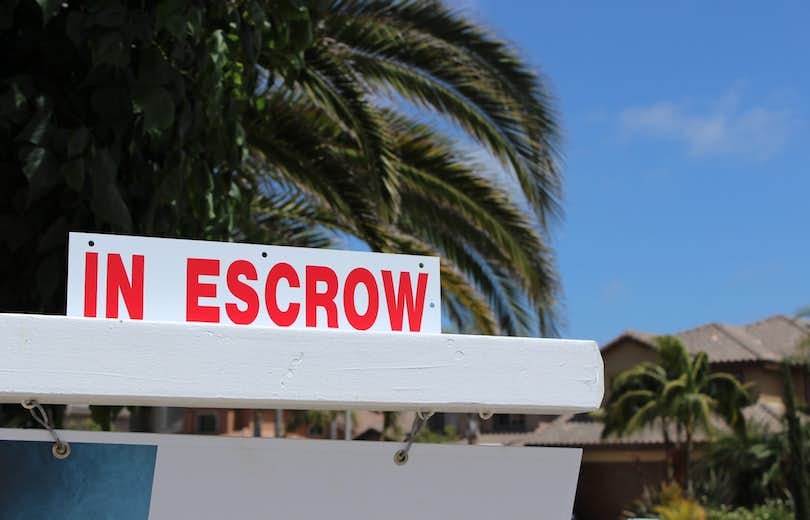
If only buying a house was as simple as walking up to someone’s front door, offering them some cash in exchange for their deed, and finishing the whole thing in a day. But unfortunately, it's a lot more complicated than that. One thing many new home buyers don't understand is close of escrow. Here's what you need to know.
Close of Escrow
Close of escrow means that a real estate transaction is final and the sale is complete.
Close of escrow starts with the buyer making their earnest money deposit, which is a deposit made to the seller in good faith. It gives the buyer extra time to come up with funding. The money is placed into an escrow (or trust) where it is held jointly.
Escrow has another meaning as well: the process of purchasing property that utilizes an independent third party (escrow company) to hold all of the funds from the buyer. The escrow company then transfers it to the listing agent who then sends it to the seller.
There is one escrow officer who handles the transactions for purchasing a house and they are quite literally a middleman between buyer and seller. They work to make the buying and selling process run smoothly.
The home buying and selling process take quite a bit longer than other purchases. There are various stipulations, inspections, and other miscellaneous T's to cross and I's to dot before the close of escrow. The escrow period should last from 30 to 50 days.
Looking to buy or sell your home?
Work with an experienced local Clever Partner Agent.
The Escrow Process
1. Pick an escrow company.
The first step is to send the purchase agreement or contract to the escrow company. Be sure to include the following:
- Property address
- Purchase price
- Name of all sellers and buyers (including contact information)
- Amount of commission that will be paid to any agents
- Name and contact information of any agent involved
All this information will be given to the escrow officer. This will provide the escrow officer with the clarity needed to ensure your transaction is processed through escrow smoothly.
2. Take note of risks.
As with all major transactions, there are risks for both the buyer and seller. If the buyer moves in early and the sale doesn’t finalize, the seller may have to go through an eviction process.
Another way to protect yourself as a buyer is to use a title company. These experts ensure that your title is legitimate and there are no liens on the title.
Another layer of protection as an option for a buyer is to sign up for title insurance, which rids the buyer of any liability if there are defects or problems with the title during the transfer of ownership. If you are using a traditional loan, title insurance is mandatory.
3. Prepare and review the seller's disclosures.
Prepared disclosures are important documents to help protect the seller from buyers. A prepared seller’s disclosure protects sellers from buyers terminating escrow and re-negotiating home price. This can lengthen the escrow process.
The disclosure documents let the buyer know if the property needs any repairs and shows them inspection reports. Without this disclosure, the buyer may ask for a lower price or ask for repairs not listed in the inspection report. It is up to the buyer to make an offer to accommodate the "as is" condition of the house.
4. Schedule property and pest inspections.
You typically need a pest inspection to close escrow in areas affected by termites. Sellers usually need to get the pest inspection within 7 days of accepting an offer.
The buyer typically has 5 to 17 days to conduct property inspections from the time they accept the offer. This time range varies from state to state. The buyer has the right to change the time frame so read documents carefully!
The inspection includes, but is not limited to, HVAC, electrical, plumbing, pool, spa, and roof.
5. Request repairs.
The buyer has the right to request repairs within the inspection period. These repairs should be complete before closing on the home. If the seller knows of issues ahead of time, they should take care of them. Doing repairs before putting the home on the market is more appealing to potential buyers.
6. Complete the appraisal.
After repairs are complete and before you remove the contingencies, your lender will complete an appraisal.
The appraisal makes sure that the property is worth the price that you are offering on the house. If the appraisal comes back at a lower price, you may need to renegotiate or back out of the sale. If the appraisal comes back at or above the accepted offer price, the sale can continue.
7. Review the escrow package.
After receiving the escrow package, which contains information about the purchase, the buyer will need to review these documents. You want to verify that the instructions match the terms of the purchase agreement.
It may be helpful to add contingencies to the purchase agreement. This gives the buyer a way to back out of escrow without penalty. It is imperative that seller monitors the removal of their contingencies when the contingency period expires. Once the contingencies are removed, the process can continue.
Extensions and Amendments
Closing Extensions
The selling and buying process isn't always simple. When that happens, it's time to amend or break contracts. Let’s say the buyer cannot close on time and everything is in jeopardy. That’s where a closing extension comes into play.
A buyer may request an extension and the seller can accept or refuse. One way to coax the seller into an extension is to release the earnest money deposit prior to closing.
Possession
Buyers should complete a final walkthrough typically five days before the close of escrow. This allows the buyer to make sure everything that they agreed upon is complete and the home is in the same condition that it was in at the beginning of escrow.
The seller then receives confirmation that funds are transferring and that they are recording the grant deed. The seller will get a settlement statement breaking down the purchase price, the closing costs and the seller’s net proceed at the bottom of the page.
The last step is the best step because the buyer possesses the property and the seller gets paid. Possession occurs the same day as the closing of escrow.
Need a top agent to help you through the escrow process of your home? You need Clever. Clever is your one-stop shop for the best real estate agents at a great low rate. Call us today at 1-833-2-CLEVER or fill out our online form to start.




